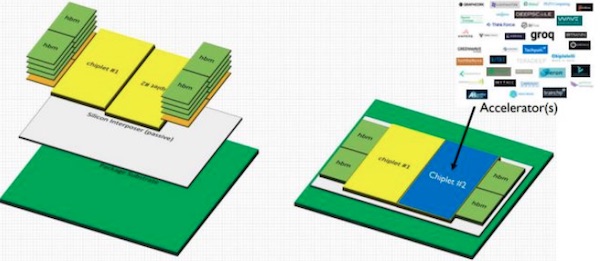Established at the start of 2019, making it less than one year old, the European Processor Initiative (EPI) is a project aiming to create a new family of low-power European processors. These processors are primarily aimed at extreme-scale, high-performance computing and ‘Big Data’, the first of which is due in 2021.
The EPI is currently implemented under the first stage of the Framework Partnership Agreement signed by the Consortium with the European Commission.
The EPI’s Primary Goals
The EPI project aims to deliver a low-power, high-performance processor, implementing vector instructions and specific accelerators with high bandwidth memory access. The processor will also be designed to meet the most stringent standards and requirements of safety and security.
It is said that this will be achieved through the intensive use simulation, the development of a comprehensive software stack, and a tape-put in the most advanced semiconductor process node.
All-in-all, the project will bring to market a competitive chip that can effectively address the requirements and demands of HPC, AI, automotive, and more. Automotive validation will be carried out using a demonstration platform.
A European Joint Initiative
The EPI comes as a result of European plans to support the next generation of computing and data infrastructures. EU efforts are now firmly synchronized in the establishment of the EuroHPC Joint Undertaking. This is a legal entity that will enable the pooling of the EU’s and national resources on HPC to acquire, build, and deploy the world’s most powerful supercomputers in Europe.
Forming one of the cornerstones of the EU’s HPC plans, the EPI project brings together 26 partners from 10 European countries, including BWM and Infineon, to develop the silicon and ensure that key competence of high-end chip design remains on the continent. This will allow European scientists, designers, and engineers to access the very best levels of energy-efficient computing performance.
EPI’s Silicon
The EPI project to build the first European HPC system consists of four streams:
-
Common Platform and global architecture stream
-
HPC general-purpose processor stream
-
Accelerator stream
-
Automotive platform stream

The European Processor Initiative's first designs, submitted in June 2019. Image Credit: European Processor Initiative.
Results from the two streams related to the general-purpose processor and accelerator chips will culminate in a heterogenous CPU for use in both standard and non-traditional compute-intensive segments such as automotive where autonomous driving requires a huge amount of computing resources.
The first one is based on the open-source RISC-V instruction set architecture. This processor will be used to build several accelerators for HPC and AI. These include vector processing units, a stencil/tensor accelerator, and a variable precision co-processor.
The second one uses Kalray’s IP, a French company that builds processors based on the very long instruction word (VLIW) instruction set architecture. This accelerator will be used for “deterministic automotive computation.”
EPI’s Common Platform package consists of two chiplets, most likely the ARM-based general processor alongside either the RISC-V-based accelerator for HPC or the Kalray IP-based accelerator for automotive. It also includes several stacks of HMB memory connected using an interposer.
Speaking in September at the HPC User Forum at Argonne, Jean-Marc Denis, EPI Chairman, said, “EPI strives to maximize the synergies between the two streams and will work with existing EU initiatives on technology, infrastructure and applications, to position Europe as a world leader in HPC and emerging markets for exascale era such as automotive computing for autonomous driving.”
Holistic Co-Design
With this co-design approach, EPI hopes to venture beyond silicon and hardware by delivering a comprehensive full-stack system that includes the OS, libraries, and developer kits, for example. This will enable EPI to develop technologies that stretch far beyond HPC and AI.
EPI began in early 2019 with 23 members from across 10 countries, however, three more have been added since. It is entirely funded by the European Union’s 2020 Horizon program and is part of the broader EuroHPC Joint Undertaking to build and deploy the world’s most powerful supercomputers in Europe.




